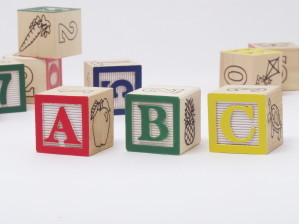The Basic Author Platform
by Elizabeth S. Craig, @elizabethscraig
I’ve made a lot of marketing and social media mistakes, especially when I was just starting out.
And since the author who inspired this post is just starting out…I’m not going to reveal his identity. I did love his debut novel–there were parts that made me laugh out loud, which is unusual for me, as a reader.
I decided I’d give him a little publicity, if I could. He was already getting great reviews on Amazon, so I thought I’d find him online, find a worthy blog post, and send out a tweet or two.
You probably know where this is going.
So…I started out at Amazon, which has (somewhat sadly) become a hub of author info. And…yep, his author page wasn’t filled out. So he wasn’t on Amazon Author Central. The publisher (his is a trad-published book) did a good job with everything else on the book page, but he wasn’t there.
I turned to Google and the author did come up. He was miraculously on Twitter but his avatar was his book cover. I know most of y’all know this—branding ourselves to our book cover is a bad idea. We want readers to remember our face. Because, hopefully and with any luck, our face will change slower than our most recent book cover.
The author had no content online that I could tweet.
And…his website, lovely though it was? It was one page. With the cover of the book, the (starred) Library Journal review, and links to the novel.
It’s so easy to find ourselves in a similar situation, starting out.
If you’ve got a book or if you’re in that stage where you’re getting ready to release a book, there are a few marketing basics that I think everyone should set up.
The absolute bare minimum:
An Amazon Author Central profile
A website (even a free one) with your name as the site name. On that website, there should be a buy-link to your books at every retailer, a bio, and (important!) a way of contacting you.
Still bare minimum, but taking it a step farther:
Reserve your name on all the popular social media platforms, even if you don’t plan on having an immediate presence there. You may need those profiles later on. Make sure those social media platforms are in your name, not your book’s name.
Create a newsletter signup for your readers on your site. MailChimp is free for up to 2,000 subscribers. Link to this on your website, any social media, and your email signature. Even if you’re not ready to send anything out, you should still be collecting names and addresses from readers who want to sign up .
Add a tagline/signature to your emails.
Have a picture of yourself if you plan on writing more than one book. That way you’re centering your branding on yourself instead of your books. The covers will change, your face…well, it will change too. But hopefully slower than your covers will.
Again, just to reiterate…it’s so easy to get caught up and overwhelmed with all the information on book marketing. Maybe that overwhelming amount of information makes it easy to freeze up and procrastinate starting on an author platform. But a little effort goes a long way.
What do you think are the basic elements for an author platform?
Basic elements of an author platform:
Click To Tweet
Image: MorgueFile: mconnors
The post The Basic Author Platform appeared first on Elizabeth Spann Craig.




